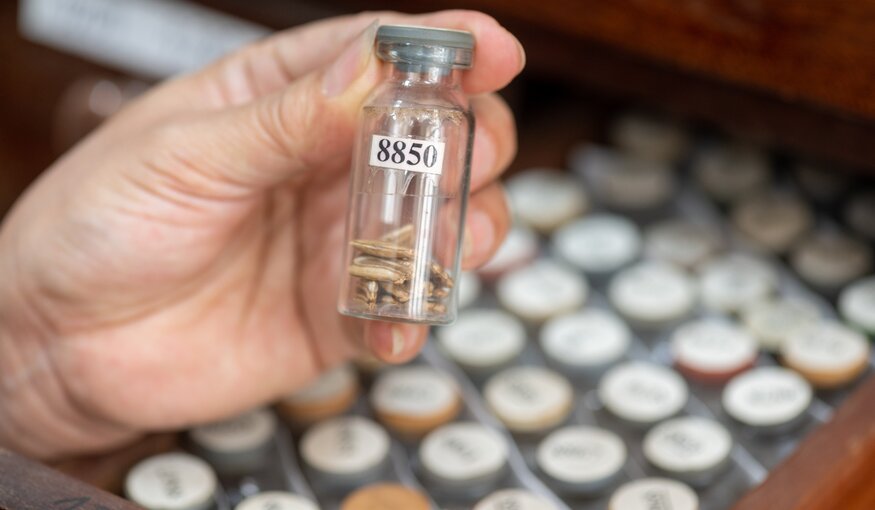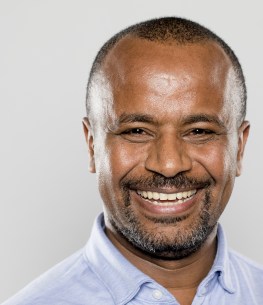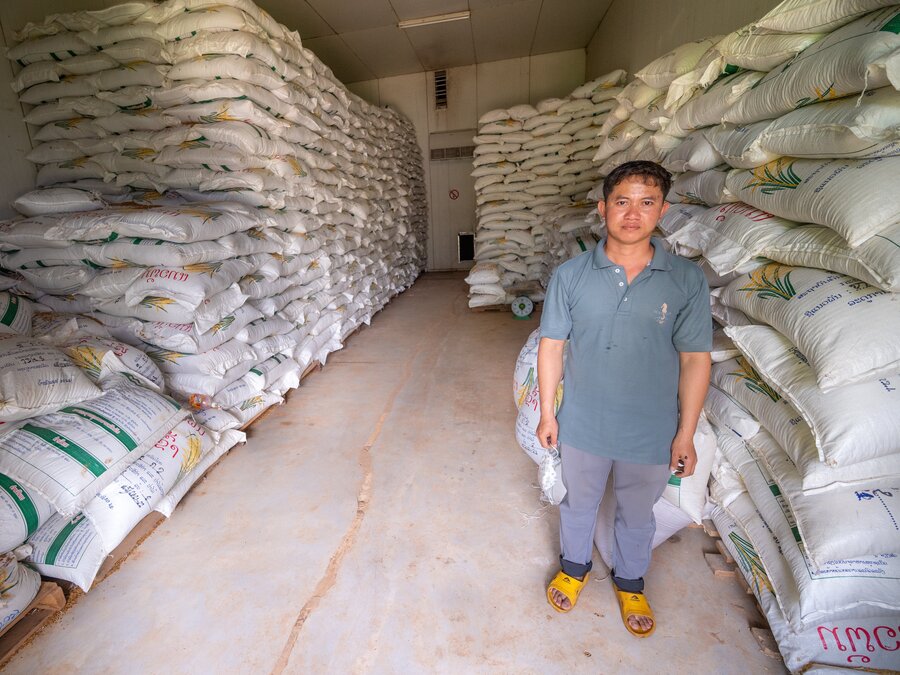BOLDly Strengthening Farmers’ Access to Diverse Quality Seeds
 Reference seed collection. Crop Trust BOLD review of Vietnam national genebank - 24-28 October 2022. (Photo: Michael Major for Crop Trust)
Reference seed collection. Crop Trust BOLD review of Vietnam national genebank - 24-28 October 2022. (Photo: Michael Major for Crop Trust)27 December 2022

Teshome Hunduma Mulesa, postdoctoral research fellow at the Department of International Environment and Development Studies. (Photo: NMBU)
Genebanks are a treasure trove of diversity for farmers, researchers and plant breeders to use to sustainably meet the need for more and better food.
But often genebanks have their hands full with the conservation aspects of their work, and may not be proactive enough in sharing the wealth of material in their care with those who could put it to use.
This challenge is something that the BOLD Project — Biodiversity for Opportunities, Livelihoods, and Development — is working to change.
The Norwegian University of Life Sciences (NMBU), is leading the work on seed systems under the BOLD Project, and the Crop Trust spoke to Teshome Hunduma, a postdoctoral fellow there, to learn more.

Seed storage at the Plant Research Center in Laos. (Photo: Michael Major for Crop Trust)
Before we go any further, what are seed systems?
Put simply, seed systems are all the actors — people and organizations — institutions — including policies, laws, regulations, social norms and customary laws — and activities that play a part in conserving crop diversity on-farm and in genebanks, using it in variety development, producing quality seeds in large quantities and putting all this diversity in the hands of the farmer.
Thanks for that. Now, please tell us a bit about your own work on seed systems.
Through the BOLD Project, together with colleagues, I am specifically looking at linkages between genebanks and all the other components of seed systems and how seed systems can function better to help farmers readily access crop diversity.
What are the most pressing challenges farmers face with their existing seed systems?
Farmer seed systems have been around since the beginning of agriculture about 11,000 years ago, when farmers were the original plant breeders, selecting the best seeds from their fields or the wild and saving, using and exchanging them. And this is still happening, especially in the Global South, where farmers are responsible for maybe 80% of the seed used.
Scientific plant breeding and the involvement of public organizations and companies in seed systems changed the rules of the game. We now have laws that govern ownership of new varieties and define whether farmers are allowed to save and re-use the seed from a crop they have grown.
There is a wide range of other rules that affect the seed trade, such as national seed laws and regulations that define who can register and release new varieties, who can produce and distribute seeds, who is responsible for quality control and so on.
And then there are the international agreements governing access to plant genetic resources and the sharing of benefits from their commercial use. These include rules defined under the International Treaty on Plant Genetic Resources for Food and Agriculture and the Nagoya Protocol of the Convention on Biological Diversity.
Unfortunately, not all of these contribute to the efficient functioning of the seed system as a whole.
So tell us a bit more about the work on seed systems that you have planned under the BOLD Project. What are you hoping to achieve, and how?
Our goal is to develop models of how genebanks and the other components of seed systems can work together most efficiently.
We have just completed a review of the state of knowledge on seed system development. This has allowed us to outline insights emerging from the literature that can help us navigate the way forward, including how genebanks have worked well with other elements of seed systems in the past. It will hopefully be published soon.
As part of BOLD, once we have completed the research phase, together with partners in the project countries, we will begin to describe how to improve the functioning of the seed systems based on the models we identify. We will then co-design pilot projects with partners where we can test these ideas, put them into practice.
What are some of the ways genebanks can play a better role in seed systems?
Up until now, genebanks primarily collect, process, pack and keep seeds in cold-room facilities.
We want to increase farmers’ options to access this diversity. Currently, diversity from the genebanks is mainly channelled to farmers through formal breeding, which develops varieties, releases them, multiplies the seed, certifies it and then markets it to farmers — it’s a long process!
So we are looking at other, complementary options. Why not give farmers’ organizations more direct access to seeds from the genebanks, for example? Why not facilitate access for private companies? Why not improve access to genebank collections for national and international research institutions, including universities?
Genebanks will have to change how they think about their roles in seed systems, and that is one area that our research will be looking into.
Who will you be working with?
We have begun to work with partners in Bhutan, Ecuador, Tanzania and Uganda. These countries represent differing policy and institutional environments and contexts for seed systems and their use by farmers.
Bhutan focuses on cultural heritage, for example, while Ecuador’s seed legislation integrates food sovereignty and farmers’ rights. Tanzania’s practices have a more pragmatic approach than its policy documents indicate, with private, public and community-based actors playing essential roles in the seed system, despite a policy focus that primarily promotes the formal seed system. Uganda aims to develop a diverse, inclusive seed system involving farmers and community-based actors. So we are capturing a wide range of policy environments.
In all these countries, our partners will ensure the participation of key seed-system actors, including farmers, civil society organizations, genebanks, national agricultural research organizations, breeders, seed producers and distributors.
What are the next steps?
We carried out national launch workshops in Bhutan, Ecuador and Uganda. Key stakeholders, including experts, organizations, companies and policymakers involved in the national and local seed systems have provided valuable inputs for the development of our research tools and methods. The Tanzania workshop will take place soon.
We will follow up with collaborative research to identify possible ways to strengthen linkages between genebanks and other elements of the seed system, which we will validate through roundtable meetings and workshops. And these will also contribute to developing the interventions we will test in the pilot projects.
Category: BOLD
About the BOLD Project
BOLD (Biodiversity for Opportunities, Livelihoods, and Development) is a major 10-year project to strengthen food and nutrition security worldwide by supporting the conservation and use of crop diversity. The project works with national genebanks, pre-breeding and seed system partners globally. Funded by the government of Norway, BOLD is led by the Crop Trust in partnership with the Norwegian University of Life Sciences and the International Plant Treaty.

